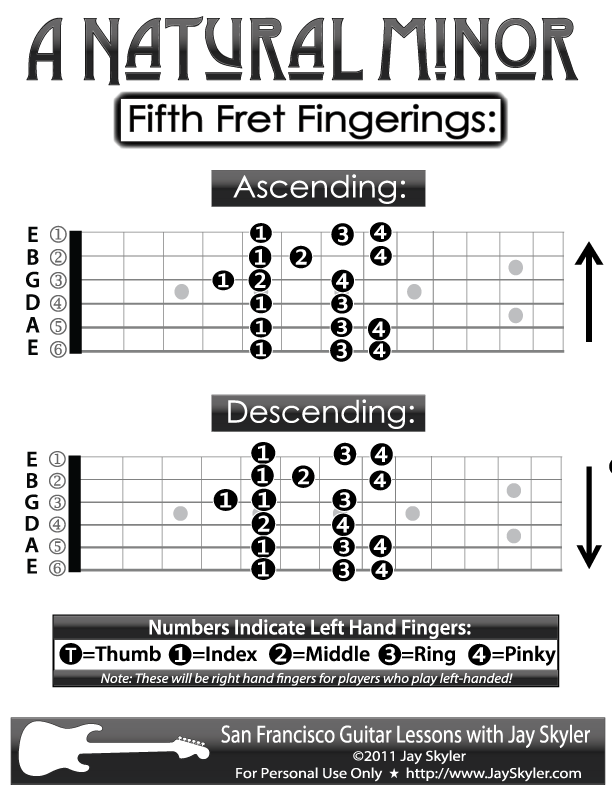
The diagram below shows the first natural minor scale pattern together with four more patterns. Here’s the same natural minor scale pattern being used to play a G natural minor scale:
#MINOR SCALE PATTERN HOW TO#
You can find out how to read guitar tab here: How To Read TABĢ-Octave G Natural Minor Scale TAB (Up & Down). If you just want to play the scale then start and stop on the green tonic notes. This is because you’ll usually be using the scale while improvising, so knowing the extra notes available in that fretboard position can be useful. Scale diagrams often include notes that are either above or below the tonic notes in this way. You may have noticed that the scale pattern above includes 2 additional notes that extend the scale beyond the second octave. (At the 8th fret the green tonic notes as shown on the diagram will be positioned over ‘C’ notes on the fretboard.) 2-Octave C Natural Minor Scale TAB (Up & Down) Play it at the 8th fret for a 2-octave C natural minor scale, as shown in the TAB below. The fingering shown in the diagram above can be used to play a natural minor scale in any key. You can find out how to read scale patterns on this page: Guitar Scale Patterns. Further down the page you’ll find four additional natural minor patterns and tabs. Get to know the sound of the natural minor scale by playing the pattern below. an A natural minor scale = an A Aeolian scale). Natural minor scales are synonymous with Aeolian scales with the same tonic notes (e.g. They just start and end on different notes. an A natural minor scale contains the same notes as a C major scale, a D natural minor scale contains the same notes as an F major scale, etc.). Natural minor scales contain the same notes as the major scales with tonic notes a minor third higher (e.g. Here are two things you should know about the natural minor scale: The natural minor scale will often sound better than other minor scales because it contains fewer potentially ‘awkward’ notes that will jar against certain chords. Although it’s not quite as ‘characterful’ as other minor scales such as the Dorian scale or the harmonic minor scale, its ‘neutral’ sound can be an advantage. The natural minor scale is a useful scale for soloing over songs in minor keys. (You could also throw in some C pentatonic minor or C blues scale licks when playing blues you can often mix natural minor, minor pentatonic and blues scales.) It’s in C, so improvise using the C natural minor scale. 
Once you’ve learned the natural minor scale patterns on this page, you can use them to play along to this backing track. More Guitar Scale Pages At Guitar Command.3 Octave Natural Minor Scale Using Multiple Patterns.Joining Multiple Natural Minor Scale Guitar Patterns.Why learn more than one pattern for each scale?.2-Octave G Natural Minor Scale TAB (Up & Down).2-Octave C Natural Minor Scale TAB (Up & Down).

Natural Minor Scale Guitar Backing Track.You’ll also be able to practice soloing with a natural minor scale using the backing track provided.How the natural minor scale is constructed.Why learning more than one scale pattern is beneficial.Four more natural minor scale fretboard patterns.The basic natural minor scale guitar pattern.Practice using the scale with the backing track provided… What you’ll learn We start with a basic natural minor scale guitar pattern, then introduce additional fretboard patterns that will allow you to play the scale all over the guitar neck. On this page you’ll find a complete guide to playing the natural minor scale (also known as the Aeolian scale) on guitar.






 0 kommentar(er)
0 kommentar(er)
